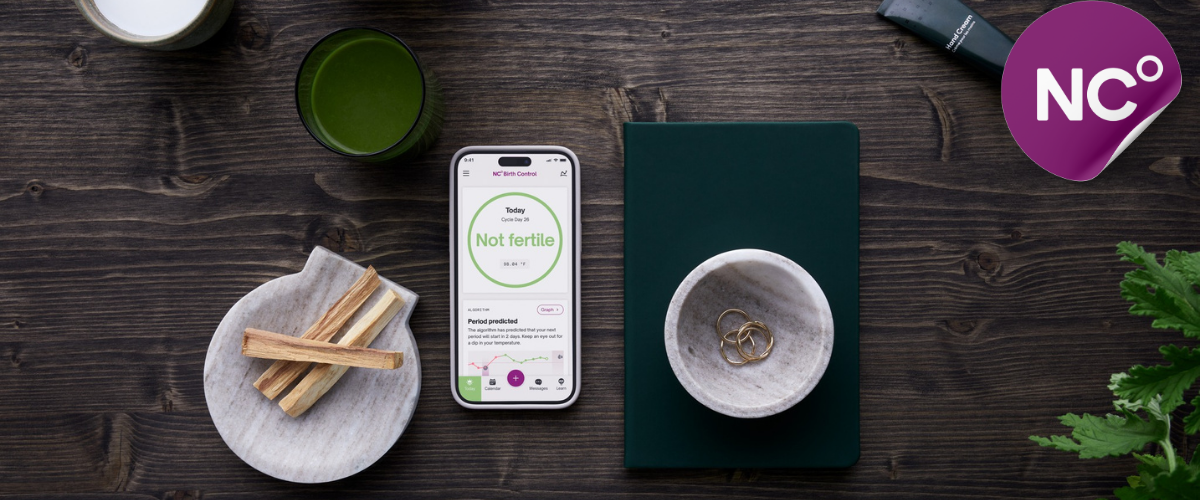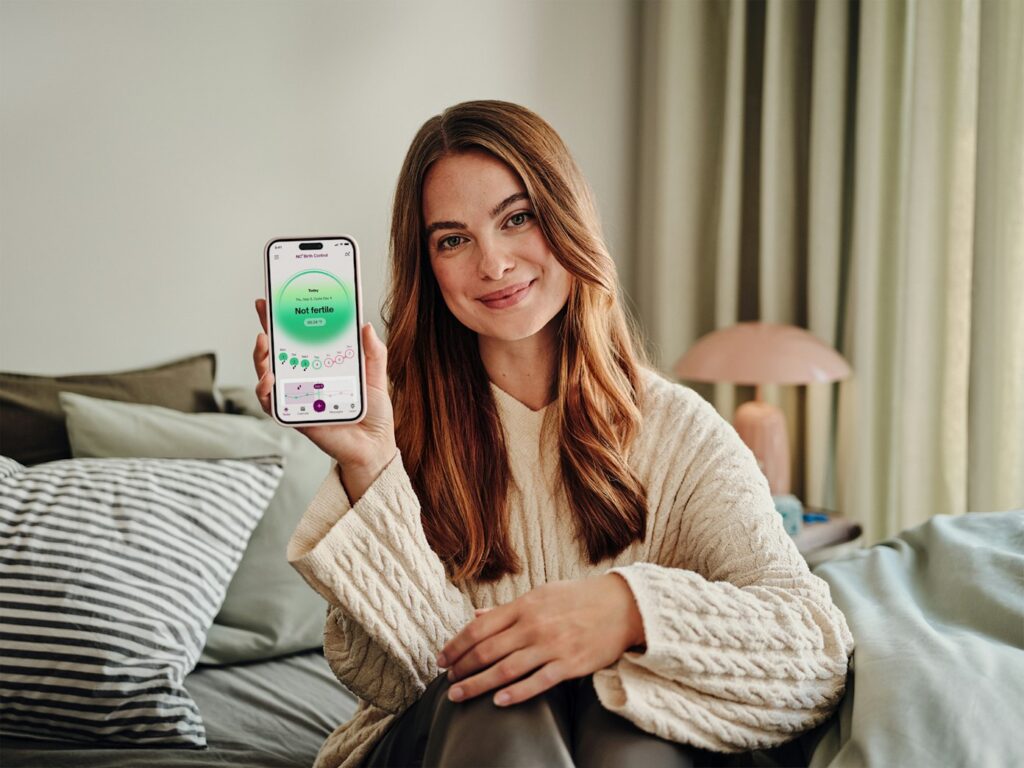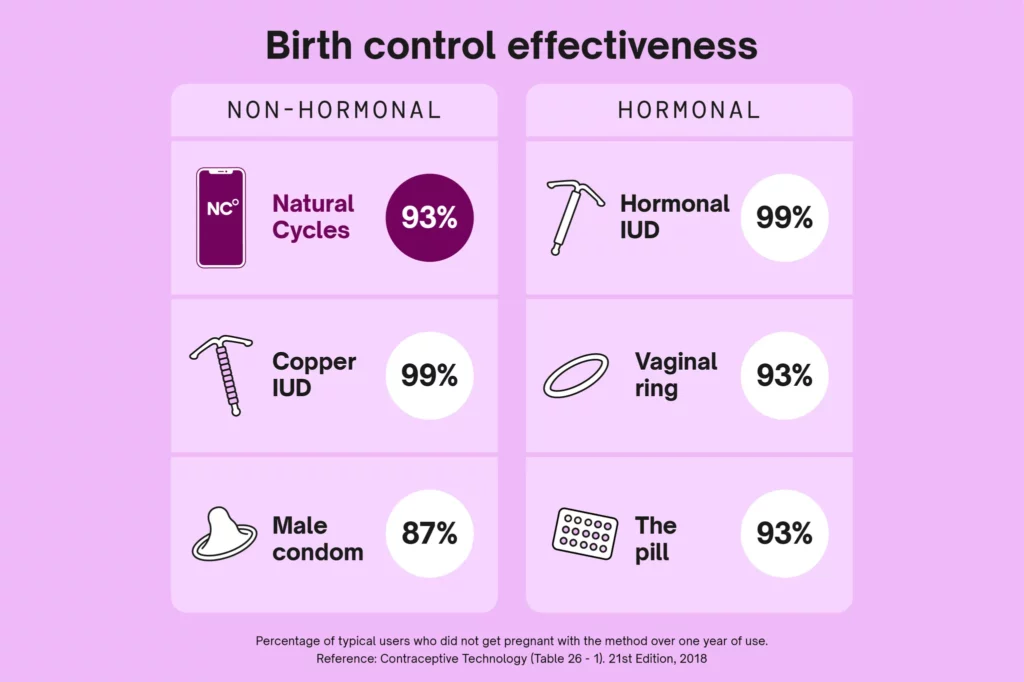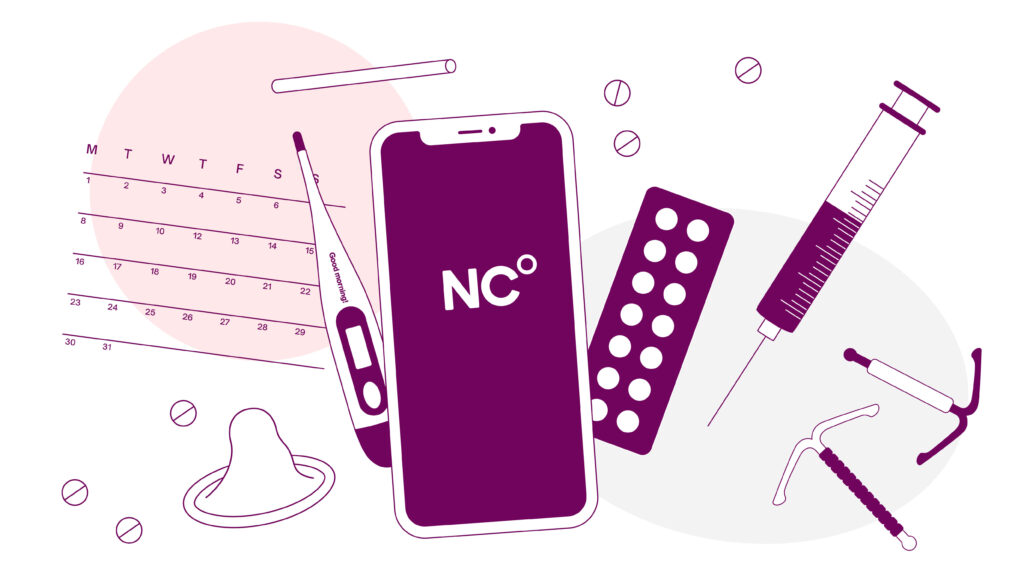
Updated on November 9, 2025
TL;DR:
- Natural Cycles is a fertility tracking app that helps you avoid or plan pregnancy—completely hormone-free.
- It uses your basal body temperature (BBT) and daily inputs to pinpoint fertile and non-fertile days.
- Effectiveness: ~98% with perfect use; ~93% with typical use.
- You’ll need to measure your temperature every morning before getting up.
- FDA-cleared, science-backed, and a pioneer in digital contraception.
- Best for people who want to feel in tune with their body—not so great if consistency isn’t your strong suit.
The Shift: From “Take the Pill” to “Track the Cycle”
Birth control doesn’t have to mean hormones, prescriptions, or monthly refills anymore. There’s a growing wave of people looking for natural, tech-driven alternatives that put body awareness front and center.
Natural Cycles stepped into that space as the first FDA-approved app for birth control. It uses fertility tracking and basal body temperature to tell you when you’re fertile. Think of it as the meeting point between science, data, and self-knowledge.

How Natural Cycles Works
At its core, Natural Cycles is simple but scientific. You take your temperature every morning before getting out of bed using a special basal thermometer. The app’s algorithm uses that data—plus your cycle history and optional LH tests—to determine your fertile window.
Days are color-coded:
- Red days: You’re fertile. Use protection or abstain.
- Green days: You’re not fertile—go ahead.
Over time, the app gets smarter and more accurate as it learns your personal rhythm.
Two Modes, One App
- Prevent Mode — For avoiding pregnancy.
- Plan Mode — For trying to conceive.
You can toggle between them anytime. That flexibility is a major advantage for anyone who wants their birth control to grow with them, not lock them in.
How Effective Is It?
Here’s the truth: effectiveness depends entirely on you. With perfect use (daily temperature, no skipped red-day rules), Natural Cycles is about 98% effective. With typical use, it’s around 93%—similar to condoms or the pill.
It’s not a “maybe-it-works” app; it’s FDA-cleared and CE-marked, meaning it’s medically certified in both the U.S. and Europe. It’s a regulated contraceptive, not just another period tracker.

The Experience: More Than Just Birth Control
The Empowerment Vibe
Natural Cycles has a cult-like following among people who love learning about their bodies. By tracking your BBT and cycle, you start noticing patterns in mood, energy, and sleep. It’s like turning your menstrual cycle into a data-driven wellness tool.
You’ll quickly see when you’re ovulating, when your period’s coming, and how your hormones affect your week. It’s education, contraception, and body awareness rolled into one.
The Reality Check
But—this method needs commitment. You have to take your temperature at the same time every morning, before moving, talking, or checking your phone. Forget too often, and the app can’t give you accurate “green days.”
If you’re a traveler, shift worker, or light sleeper, expect more red days until your data stabilizes. It’s a method that rewards consistency and punishes chaos (at least a little).
The Pros and Cons
Pros
- Hormone-Free: No synthetic hormones or side effects.
- Dual Purpose: Works for both preventing and achieving pregnancy.
- Body Awareness: Helps you understand your cycle and fertility in a deeper way.
- Scientifically Validated: Officially cleared as a contraceptive method.
Cons
- Daily Commitment: Missing temperature readings reduces accuracy.
- Learning Curve: Takes a few cycles before predictions stabilize.
- Not STI Protection: Still need condoms for STI safety.
- Red-Day Frustration: Early on, you might feel restricted by too many red days.
- Subscription Cost: There’s an annual fee, and you may need a thermometer or wearable device.
Who Should Try It—and Who Should Skip It
If you love structure, routine, and data, Natural Cycles will feel empowering. It’s ideal if you’re ready to take an active role in managing your fertility and want to avoid hormones.
If you’re forgetful, travel a lot, or prefer a “set it and forget it” method like an IUD or implant, this might feel like a chore. It’s not the most effortless birth control—but it’s one of the most insightful.

Getting Started Without Stress
- Get a basal thermometer (the app sells one, or use a compatible wearable).
- Measure daily—before you get up, talk, or drink water.
- Log other data: PMS, flow, sleep, mood, etc.—the app gets smarter with more info.
- Give it 2–3 cycles to learn your body. Patience is key.
- Talk with your partner: agree on how you’ll handle red days.
Once you’re in rhythm, it feels surprisingly natural—like brushing your teeth, but for your reproductive health.
The Bottom Line
Natural Cycles blends science, autonomy, and technology into a modern approach to birth control. It’s empowering, accurate when used properly, and rooted in understanding your body—not controlling it.
Still, it’s not effortless. You’re trading convenience for awareness, hormones for habit, and routine for responsibility.
FAQs
Q1: How long until the app becomes accurate?
A: Usually after 1–3 full cycles. It needs time to learn your personal rhythm.
Q2: Does it protect against STIs?
A: No. It’s strictly for fertility tracking—use condoms for STI protection.
Q3: What happens if I skip a morning?
A: Missing data makes predictions less reliable; the app will likely mark that day as fertile.
Q4: What tools do I need?
A: A basal thermometer or compatible wearable device (like a smart ring).
Q5: Can it work if my cycle is irregular?
A: Yes, but the algorithm will take longer to adapt, and you’ll have more red days early on.
Q6: How much does it cost?
A: Expect to pay a yearly subscription plus the cost of the thermometer.
Q7: Can I switch from hormonal birth control?
A: Yes, but allow a few weeks for your natural cycle to normalize before tracking.
Q8: Can it help me get pregnant?
A: Absolutely. Switch to “Plan Mode” to target your fertile window.
Q9: What if I travel or sleep inconsistently?
A: Temperature changes from jet lag or sleep shifts can reduce accuracy—log consistently when possible.
Q10: Is it worth it?
A: If you value body awareness and hormone-free living, yes. If you want zero effort, probably not.






